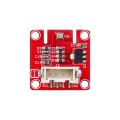Helium IoT Network Sensor Development board | H2S-Dev V1.2 Basic
H2S-Dev board is a ready-to-use, Open source hardware, Arduino compatible, LoRaWAN Helium network sensor development board. It is capable of implementing a number of sensor (Basic and Full variant) and positioning applications (Full variant only). The board is mainly targeted to makers and hobbyists.
General description and key features
H2S-Dev board is a ready-to-use, Open source hardware, Arduino compatible, LoRaWAN Helium network sensor development board. It is capable of implementing a number of sensor and positioning applications. The board is mainly targeted to makers and hobbyists.

H2S-Dev board key features and flexible assembly options including ESP32 and SX1276 LoRa (868 MHz or 915 MHz) modules as well as optional GNSS. A practical powering circuitry is implemented that is capable of powering the board from the programming interface, USB-C and/or optional RPi compatible connector. The LiPo battery controller also charges the battery connected. The soldering area and I2C Crowtail compatible extensions (on demand for self soldering) allow wiring of significant number of sensors or just connecting devices via I2C interfaces.
| Variant name | Specifications |
| H2S-Dev V1.2 Basic 868 MHz | ESP32-WROOM-32UE-N4, LoRa SX1276 at 868 MHz, 5 GPIOs, 2xI2C / Crowtail compatible positions, 2x Green LED user configurable indicators, LiPo battery socket with charging capability, USB-C powering, programming interface |
| H2S-Dev V1.2 Basic 915 MHz | ESP32-WROOM-32UE-N4, LoRa SX1276 at 915 MHz, 5 GPIOs, 2xI2C / Crowtail compatible positions, 2x Green LED user configurable indicators, LiPo battery socket with charging capability, USB-C powering, programming interface |
H2S-Dev board is built around ESP32 MCU module and LoRaWAN SX1276 based radio module, supporting worldwide radio frequency bands, I2C standard interfaces for connecting various sensors and a place for an optional and relatively cheap integrated GNSS module with small chip antenna on it. The development board also incorporates a standard 7-pin ESP32 serial programming interface to use with any compatible Serial to USB adapter. Set of LED indicators - Power, “1 second” GNSS, Charging and General purpose LEDs are on board for indicating certain activities. USB-C and LiPo battery sockets are available for dual powering with charging circuitry and battery level sensing line routed to a CPU GPIO pin. A development area grid - holes matrix area (4 rows x 8 holes each, 0.1 inch / 2.54 mm pitch) with power and ground points nearby for adding sensors, interfaces, and add-ons is available for furhter experiments. Several GPIOs are routed close to the matrix area to simplify wiring.
Тechnical parameters

This example code in (H2S-DEV-THS-V0.1.ino) sends a valid LoRaWAN packet over The Helium network with a payload containing temperature and humidity data as they are read from a DHT11 sensor, connected to GPIO13 using frequency and encryption settings according your region.
Code location: https://github.com/hobbyiot/HELIUM-SENSORS/tree/main/H2S-Dev%20V1.2/SW
The hardware of the Helium IoT Network Sensor Development board V1.2 is designed as an open source project in the Altium Circuit Maker environment. To access the project follow the links below.
https://workspace.circuitmaker.com/Projects/Details/sivanovbg/H2S-Dev-V12
https://365.altium.com/files/AC741A32-A420-4803-868D-E6CB6756A587
More information
GitHub: https://github.com/hobbyiot/HELIUM-SENSORS
Web: https://www.hobbyiot.net/













